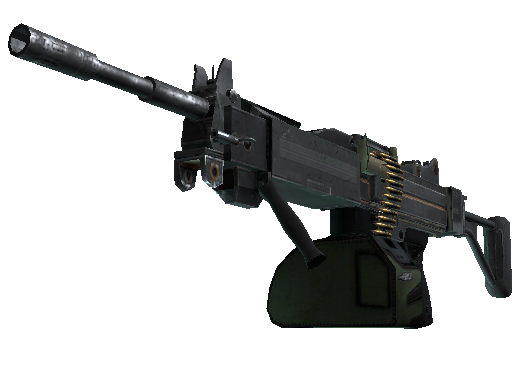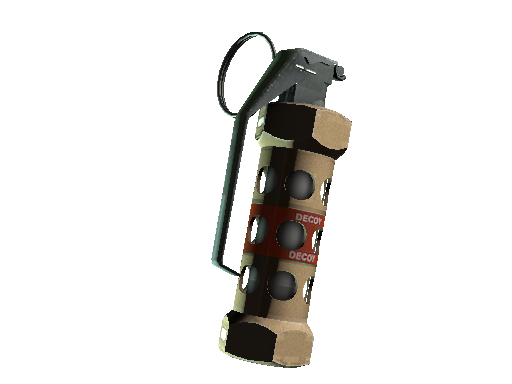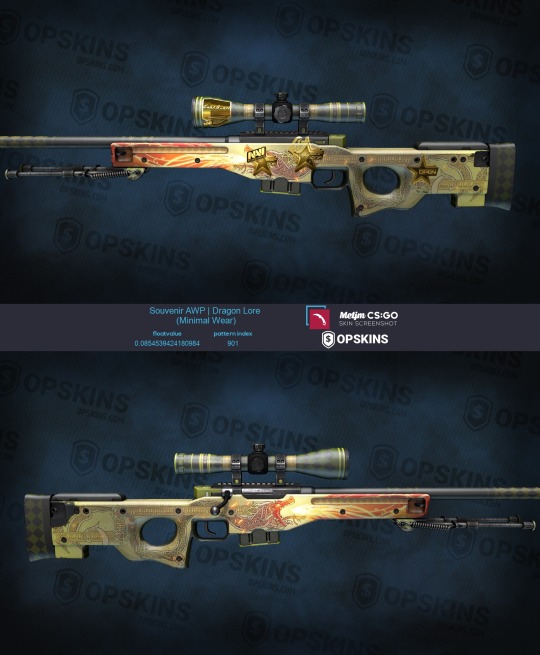Text
The Negev Meta

On March 24, 2017, the CS:GO team made the decision to take the Negev and R8 Revolver out of competitive to make some changes while leaving the weapons available in casual, demolition, or deathmatch gamemodes. On April 12, 2017, they made the weapons available in competitive again, but with some changes. They reduced the firing delay on the R8 and lowered it’s accuracy over a long distance while reducing its cost to make it a viable 1st round buy. The Negev, however, had the most drastic change, reducing its cost to $2000 and making its shots settle to near-perfect accuracy after just 40 of its 200 round clip. This allows the weapon to be an extremely powerful 2nd round buy instead of a scarce late-game buy. The CS:GO team’s excuse for this low price is that they “expect that the Negev will be a situational weapon that will require experimentation on the part of teams to be effective, so as a starting point its price has been lowered significantly”. Let me tell you why that has destroyed competitive matchmaking for the next two weeks.
There is an unspoken no autos rule where both teams silently agree not to purchase the auto snipers, Negev, M249, and XM1014. When this truce is broken, you can hear a phrase uttered into the ear of the one who broke it: “break the auto ice, pay the auto price”. This silent rule is generally in play because for the most part, people agree that these auto weapons are overpowered and difficult to counter. This Negev change has completely destroyed this unspoken rule, making it the dominant weapon in a lot of matches simply because it is more overpowered than ever. I can see why the CS:GO team decided to make the price of this weapon so low, to learn about how the changes they made to the weapon itself affects the competitive environment. But at $2000 and a spread that becomes more accurate over time, it makes this weapon a better choice than an AK-47 or an M4 rifle, both economically and strategically. This means that more players in matchmaking chosen to use this weapon over those which are usually chosen. This completely destroys the competitive meta until the price of the weapon, or some of its stats, are changed.
Already most eSports organizations have banned this weapon for use in competitive play because it is currently too overpowered. You can try and make the argument that “maybe the competition meta needs a change”, but you would be wrong. CS:GO prides itself on being a balanced game in terms of equal weapon power, each weapon with its own advantages and disadvantages to others in certain situations. CS:GO is a very balanced game in my opinion, however this new Negev has made the game unbalanced and certainly broken. I believe that the CS:GO team is aware of this fact and will change the weapon as soon as they have enough data to justify changes, but I am among the portion of the community who have sworn off competitive gameplay until it is fixed. I mean, I love CS:GO, but honestly this is very wrong Valve. Please fix this broken Negev meta.
0 notes
Text
Are Decoy Grenades Viable Competitive Options?

Ah, the Decoy grenade. At just $50 a pop, it is the cheapest possible thing to buy in CS:GO, but is it really worth the purchase? That $50 could mean the difference between an AWP and armor or just another miscalculated buy option.
This grenade, when thrown, will emulate the firing sound of the thrower’s most powerful weapon and will show up as a red “enemy spotted” dot on the entire enemy team’s minimap. It does this for about 15 seconds, then explodes to cause around 5 damage to any player in a very small radius. It has a movement speed of 245, which is only 5 less than the knife.
There are many disadvantages to this grenade. Firstly, it has a maximum stack of 1, and takes up one of four grenade slots. It also will show the red dot regardless of where enemies are, which could alert them that there is a player in that area and to either approach/not approach it, depending on the situation. Because it is very noisy for a prolonged length of time, it is not advantageous to use this grenade when being stealthy like a Flashbang. Also, every experienced player will not fall for the illusion the grenade attempts to create but will simply ignore it, making it a wasted attempt at higher skill levels. And lastly, the purchase of this grenade in previous rounds could affect your economy, while only slightly, leaving you with $50 less for a full buy.
There are a few advantages, however. In team fights, it could be used as a good distraction while the enemy pushes or defends an area to lure them into peeking the grenade, exposing them for an easy kill. It is also an excellent tool to distract any bots, which are easily fooled anyway. Probably the only actual good aspect of this grenade is the model’s similarity to the Flashbang. This could fool enemy players to look away when they see it, only for you to pop out and kill them, unflashed and unharmed. However, some players with quick reaction times may recognize the red strip to be different from the Flashbang’s blue stripe and not look away, making it a futile effort to throw it.
Are Decoy grenades useful? In very early ranks or against bots, yes. But in an actual competitive environment, it lacks a lot of utility. You seldom see professional players purchase this grenade, even for the use as a Fake Flashbang. In those situations, most players prefer to use their pistol as a fake than a real fake. In my opinion, Decoy grenades are not viable in competitive, but for a $50 purchase, what more could you really ask for.
0 notes
Text
On Learning Grenade Spots
In my opinion, one of the most important parts of competitive gameplay in CS:GO (besides crosshair placement, spray control, communication, and economy) is grenade Spots. Whether these are Smokes, Fires, Flashes, or HEs, grenade spots can be the difference between taking a site and losing the round. Smoke grenades can cut off certain angles and choke points that are dangerous to get caught in, whereas fire grenades can cause important AoE damage and force your enemies to rethink their strategies. Flashbangs can blind and deafen your opponents so you can make insane plays, and HE grenades can cause a lot of damage in a short burst if thrown right.
One of the most important parts of competitive play are these grenade spots. At higher ranks, rounds almost always start with smokes and flashes so that the Terrorists can take a certain site, and counters to these grenades by the Counter-Terrorists so that they can maintain control of the site that is being attacked. Grenades can also be used to fake a push to a site, because when all those smokes start going off players start panicking and calling for backup.
When used correctly, these grenades can mean the difference between taking a site and dying on the push, between safely planting the bomb and taking a dangerous risk. They can mean the difference between a ninja defuse clutch and an idiotic play. Grenade spots are essential parts of the game, because after all, Valve would not put them in the game if they didn’t want you to use them
So you want to know how to nade correctly? One of my favorite ways to learn these spots are on the training maps made by Dolnma, who is very talented and knowledgeable about these spots. His collection of maps can be found at http://steamcommunity.com/workshop/filedetails/?id=477197888 and currently include Dust 2, OLD Inferno, Overpass, Mirage, and Cobblestone. He is working on new maps and will post more soon.
youtube
Here is the demo video attached to the collection which demonstrates his Dust 2 training map.
0 notes
Text
Do Skins Make the Player?
Skins, like it or not, are a huge part of CS:GO. For years, players have prided themselves on the value of their inventory and have been the envy of their friends simply because they own a digital item. A major stereotype exists, however, where lower-rank players associate skill with inventory value. There exist multiple examples where this is not true.
Currently, I am writing this post while watching my boys on Fnatic lead 4-0 on Cobblestone against North in Round 2 of ELEAGUE Atlanta 2017, and one thing stands out to me. As I watch, I see my 2nd favorite CS player, KRiMZ, currently sporting a default knife. And this is not the only time I have noticed this. Just yesterday, I was watching EnVyUs vs. Liquid and noticed one of the players had no skins at all, yet I was still watching a top pro player.
This stereotype also works at the other end of the spectrum. I’m sitting here at Gold Nova 1 with an inventory value of almost $500 USD, which does not sound like a lot of money compared to some of the top inventories out there (which crawl up all the way to $15k USD), but at my rank most players still have less than $30 USD put into the game.
However, associating skill with inventory value is wrong for several reasons. First is the luck factor in the game. A huge part of CS:GO’s moneymaking comes from the buying and selling of keys and cases, which players can open and have a chance to get rare skins. Naturally, some players will be luckier than others, which absolutely influences their inventory. If a Silver opens a Chroma 2 case and gets an M9 Bayonet Sapphire, his inventory shoots up $2k USD. If a Global Elite refuses to sink more money into the game other than to buy some keys and cases, and never opens anything better than a blue, his inventory value will stay relatively low. A lot of luck can factor into this.
There also exist players who don’t care about the game as much as they care about the look of their loadout. We call these players “Collectors”. Collectors simply want their inventory value to surpass others without trying to get better at the game itself.
Some players, unfortunately, do actually think that there is a correlation between their skill and their inventory. They think that if they purchase that expensive knife or that Contraband M4 that they will instantly become a higher rank than they are, however it is only a shock factor. If you spend more money on the game than is average at your rank, players on both your team and the enemy team will think you are actually good at the team and will expect you to play like a god. The truth is, skill can only come with practice, and virtual items only look cool.

Pictured here is the Souvenir AWP | Dragon Lore which belongs to the CS:GO player GuardiaN, known as one of the best AWPers in the professional world. While GuardiaN is a great player and deserves this great skin (which also has his souvenir signature on it), however many players desire the Dragon Lore skin, regardless of their rank.
0 notes
Text
Dust 2: Don’t Leave Mid Un-Smoked
Welcome back to CS Strats, the ONLY place you NEED for the best Counter-Strike strategies and tips!
Every player on Dust 2 knows the common setup: one player on the Terrorist team holds a sight line on Mid Doors with a Scout or an AWP. The player who is delegated this task does this for the sake of information about how many Counter-Terrorists have crossed from CT Spawn to cover B site, which could be important information if, perhaps, the CTs decide to stack a site. This information could adjust the direction of the round, influencing the Terrorists to either attack or not attack a site. To prevent this kind of information, it is important to smoke Mid Doors to cut off a lifeline to the Terrorists’ strategy.
Here is a video demonstrating the CT Spawn to Mid Doors smoke, that works quite effectively:
youtube
Now as long as you don’t have pesky teammates who get in your way, if this smoke is done promptly and correctly, you will essentially cut off one of the decision points for a Terrorist push.
Besides the smoke, there are other options to cutting off this piece of information. You can temporarily flash the Terrorist sniper by popping a flashbang over Mid Doors and into his line of sight. This way, he can’t see, and you save $200 by not buying a smoke grenade. You could also place your CT AWPer on Mid Doors to take that Terrorist out. As long as your guy is better, you not only take away information from the Terrorists, but you also eliminate 1/5 of their team.
All of these are viable options for cutting of information for the Terrorists, so depending on the skill of you and your teammates your options vary. But be wary: some of the best shots know the best places and timings to shoot through the doors to get a pick. So even if they are smoked off or flashed, they could still kill you, and leave you wondering just how in the world they did that.
That is all for this strat. If you enjoyed it, please consider leaving a note or following the blog for more strategies! If you have a particular strat or map which you would like to see covered, then please leave a comment! All feedback will be read and greatly appreciated! Until next time, remember: “Watch out! Sniper!”
2 notes
·
View notes
Text
“G-Strat” (a.k.a. Vent to B) on New Nuke
Hello, and welcome to CS Strats, the best place for all Counter-Strike strategies that you may or may not know! If you enjoy the content and want to see more, considering following the blog and leaving a note!
The first strat we have is one that I personally love to use when playing on one of my favorite maps, Nuke. The name “G-Strat” was coined by the YouTube group “The Crew” to honor their best player, G18.
This strat is primarily a first-round, save round, or eco round strategy. The reason for this is because you are relying on a fast entry and plant, and a lot of pressure to the CTs applied in either pistols or SMGs is essential to the strat’s success. The only real purpose for this strat is to end the round quickly with some bomb plant money, but if your team plays right you will win, or the round could end even sooner if all of your teammates rush on a save round into a good spray from a CT in Mini!
The strat works as follows: starting from T-Spawn, rush inside to Lobby(a.k.a. “Fork”) and make your way into “Squeaky”. You’re going to want to correctly order your team at this point, because both the Entry-Fragger and the Bomb Carrier need to be perfectly positioned. A common execution for this part in the strategy is to rush in this order: Entry-Fragger, Support, IGL, Sniper, and finally Lurker. The bomb carrier is usually second or third in the order, regardless of entry setup. After the Entry-Fragger has taken care of the CT in Mini or Hut (because there always is one), break open the vents and rush onto the bombsite. At this point, you have two primary options for planting: top of the silo or behind site. Quite honestly, any plant (except for Toxic) can be used, depending on your team’s strengths. Once the bomb is planted the focus of the strat is to establish control on site. The reason for this is because once a CT catches sight of your team from Heaven or hears your footsteps, you will all be called out and they will be on top of your team in no time. Good positions to cover entrances and keep the site safe include Secret-Tunnels, Control Room(a.k.a. “OBS”), Decon(a.k.a. “Broom”), Vent, Doors, Dark, and Toxic. But holding strategies are really determined by your rank and skill, because if you cannot hold a sight line or a CT checks your hiding spot, it’s all over.
Here is a visual representation of the strat on a map overlay. The yellow arrows represent the strat itself:

Here is a video showing how the strategy works:
youtube
PLEASE NOTE! This video was recorded in offline mode without any bots, showing a flawless entry into the B site. In real competitive scenarios however, please expect resistance from the Counter-Terrorists in an effort to thwart your bomb plant.
That is all for this strat. If you enjoyed it, please consider leaving a note or following the blog for more strategies! If you have a particular strat or map which you would like to see covered, then please leave a comment! All feedback will be read and greatly appreciated! Until next time, remember: “Don’t be a loser, buy a defuser!”
2 notes
·
View notes
Link
3 notes
·
View notes